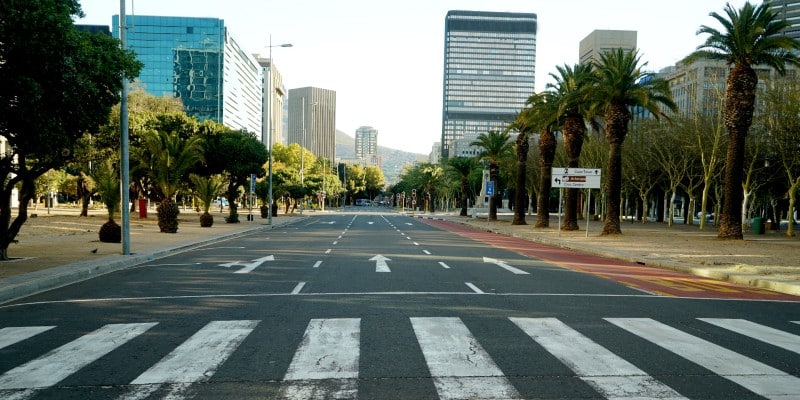While COVID continues to upend economic, social, and health systems in many parts of the world, in other regions life seems to be slowly returning back to normal. Meetups with friends may no longer need to be distanced, dining may be possible indoors, and masks might even be left at home. For those lucky enough to live in communities that have a strong handle on the virus, it’s a comforting feeling to think that all of this may be over soon. But as understandable as collective nostalgia for normalcy is, embedded in it is an assumption that returning the world back to normal is okay. It isn’t.
What is normal?
Before the pandemic overwhelmed the global economy, billions of people struggled to make a living for themselves and their families. Around half the world’s population lived on less than $5.50 a day and had no access to social safety nets, leaving them one accident away from sliding into extreme poverty.
From an education standpoint, more than 250 million children were out of school, of which 56% were “not learning.” Many emerging economies suffered from a lack of healthcare infrastructure, leaving them ill-equipped to manage widespread diseases like the coronavirus. And healthcare expenditures in many emerging economies were distressingly low due to a lack of resources, making it clear that hundreds of millions of people were already living on borrowed time.
The aforementioned statistics describe what’s normal for a majority of people on the planet. Clearly, going back to a world where hundreds of millions of children are out of school, and where billions of people across the world do not have access to decent healthcare facilities, should not be the goal. In short, getting the world back to normal is not enough.
A normal worth pursuing
In spite of our differences, one silver lining that’s come from the pandemic is the glimpse it provided into what the widespread unity and resilience felt throughout the world can accomplish. Early on, New Yorkers, forced inside because of quarantine, emerged at open windows and balconies to applaud, cheer and even bang on pots and pans in a show of solidarity and appreciation with the city’s healthcare workers. News outlets have reported stories of professional athletes forgoing paychecks to help compensate stadium workers, people hand-sewing facemasks and donating medical supplies, and neighbors volunteering to buy groceries for the elderly. More globally, a group of wealthy countries have donated billions of dollars in solidarity to fund the COVAX program designed to supply vaccines to lower-income countries.
Perhaps like no other time in history, there’s a sense that we’re all in this together, and that by setting our collective will to solve a common problem, we can be unstoppable. While much progress remains to be made to overcome the pandemic, it does finally seem like there’s a light at the end of the tunnel. Building off the resilience and unity the global community has shown in fighting back against COVID-19, what if humanity focused its attention to create a new normal worth pursuing? To start, what if we tackled other long-standing problems, such as poverty?
A better way to fight poverty: it’s not enough to treat the symptoms
Global stakeholders have spent roughly $4.3 trillion during the last sixty years trying to end extreme poverty. While progress has certainly been made—throw trillions of dollars at any problem and some progress will definitely be made—it’s coming far too slow for those who continue to live in precarious and unsafe living conditions. Why?
As explained in this video, one reason is that too often development policies focus exclusively on treating the symptoms of poverty, such as poor infrastructure and overt corruption. This is the economic equivalent of letting COVID-19 run wild while medical professionals wait in under-equipped hospitals to treat infected patients as they come in. A long-term solution to the problem necessitates a better understanding of what causes prosperity and then implementing those solutions.
As we’ve grappled with this question at the Christensen Institute, our findings show clearly that one of the best avenues to prosperity is through the implementation of market-creating innovations. These innovations transform previously expensive, complicated products into ones that are simple, affordable, and accessible. As new populations begin to consume these products, it kicks off a domino effect of prosperity that pulls jobs, profits, infrastructure, and a culture of entrepreneurship into societies. Market-creating innovations have helped prosperous countries get to where they are today. A heavy dose of this type of innovation could be the engine that drives many poor countries towards prosperity in the future.
Rather than grow complacent as things gradually return back to normal, let’s remember that what used to be normal simply isn’t good enough. If anything good is to come from the devastation caused by the coronavirus, let it be an opportunity to rethink, reconsider, and redefine a new normal for many in our world who currently suffer. By harnessing the global community’s collective ability to solve difficult problems, we will emerge more capable than ever to combat poverty and other problems we have left to solve.
To learn more about market-creating innovations’ ability to create prosperity, see:
5 reasons why these powerful innovations might be our best shot at solving poverty




